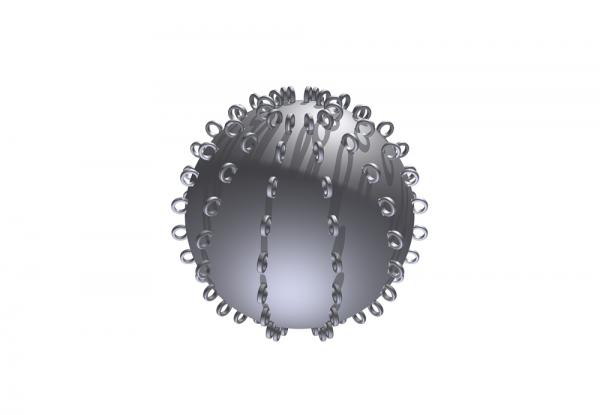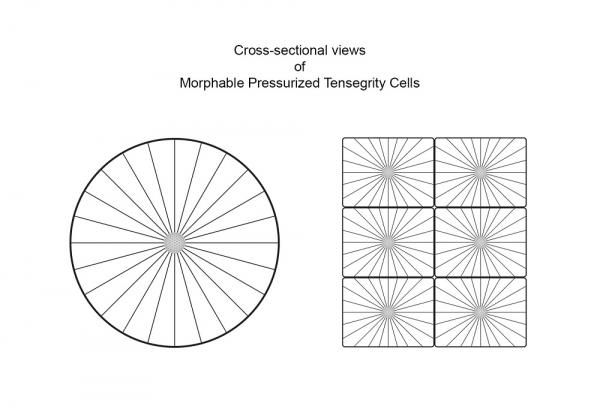BY LETTER
Morphable Pressurized Tensegrity Cells
Technology > Application > Construction
Technology > Application > Everydaytech
Technology > Application > Materials Technology
Technology > Application > Everydaytech
Technology > Application > Materials Technology
 Image from John Edds | |
| External view of a MPTC, showing attachment locations | |
During morphing, different actuator-lines lengthen or contract, pulling the balloon envelope into a different shape. The volume of the balloon remains constant, and so the process does not affect or depend upon changes in internal pressure. This allows morphing to occur quickly and with low energy expenditure. Actuator-line length remains constant during the intervals between shape morphing, maintaining the shape. The compressive strength of a MPT Cell is the result of the internal pressure being higher than the external pressure, and its tensile strength is a result of the high tensile balloon, actuator-lines and nucleus materials.
 Image from John Edds |
Cells can be permanently joined together or connected by a reconfigurable extracellular matrix. One design for the extracellular matrix consists of covering the outer surface of each cell's balloon envelope with numerous micro-scale utility foglet-like arms. As MPT Cells are macroscopic, millions, billions, or more such arms cover them. Another method forms the extracellular matrix from robotic myomemetic rope loops. Rope-bots connect specialized cells together by looping through annular attachment points that are integrated onto the external surface of the balloon cell.
Related Articles
Appears in Topics
Development Notes
Text by John Edds
Initially published on 21 January 2016.
References:
Bio-inspired Morphing Systems, BIMS - Charles Chase, and Drs. James Gimzewski and Victoria Vesna
Initially published on 21 January 2016.
References:
Bio-inspired Morphing Systems, BIMS - Charles Chase, and Drs. James Gimzewski and Victoria Vesna






